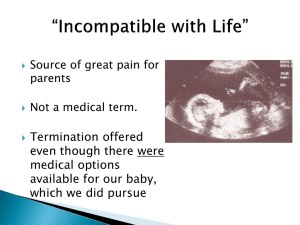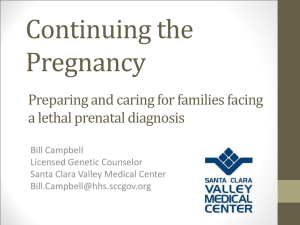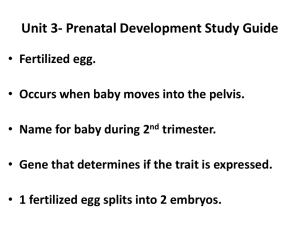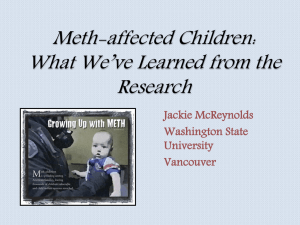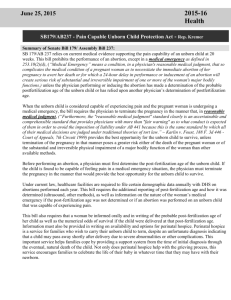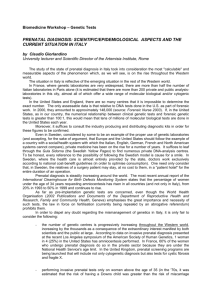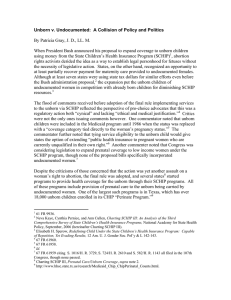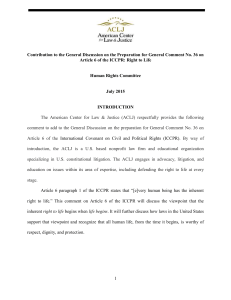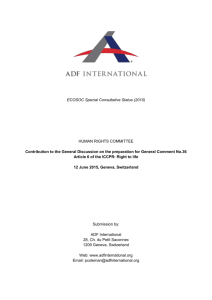Word - National Catholic Partnership on Disability
advertisement
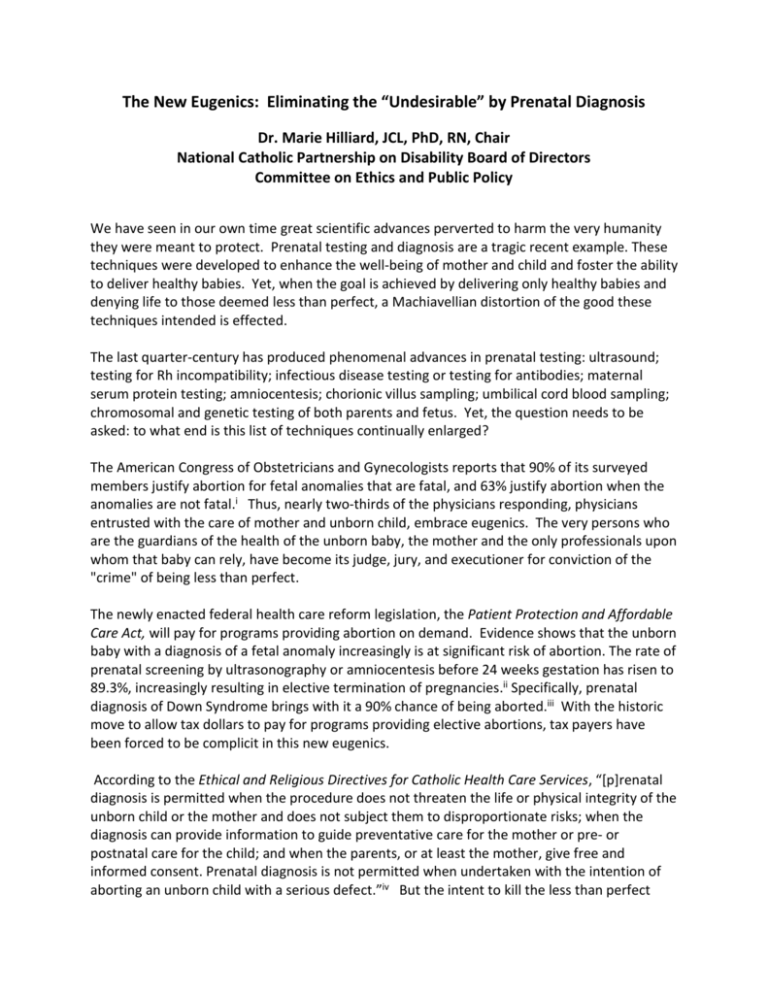
The New Eugenics: Eliminating the “Undesirable” by Prenatal Diagnosis Dr. Marie Hilliard, JCL, PhD, RN, Chair National Catholic Partnership on Disability Board of Directors Committee on Ethics and Public Policy We have seen in our own time great scientific advances perverted to harm the very humanity they were meant to protect. Prenatal testing and diagnosis are a tragic recent example. These techniques were developed to enhance the well-being of mother and child and foster the ability to deliver healthy babies. Yet, when the goal is achieved by delivering only healthy babies and denying life to those deemed less than perfect, a Machiavellian distortion of the good these techniques intended is effected. The last quarter-century has produced phenomenal advances in prenatal testing: ultrasound; testing for Rh incompatibility; infectious disease testing or testing for antibodies; maternal serum protein testing; amniocentesis; chorionic villus sampling; umbilical cord blood sampling; chromosomal and genetic testing of both parents and fetus. Yet, the question needs to be asked: to what end is this list of techniques continually enlarged? The American Congress of Obstetricians and Gynecologists reports that 90% of its surveyed members justify abortion for fetal anomalies that are fatal, and 63% justify abortion when the anomalies are not fatal.i Thus, nearly two-thirds of the physicians responding, physicians entrusted with the care of mother and unborn child, embrace eugenics. The very persons who are the guardians of the health of the unborn baby, the mother and the only professionals upon whom that baby can rely, have become its judge, jury, and executioner for conviction of the "crime" of being less than perfect. The newly enacted federal health care reform legislation, the Patient Protection and Affordable Care Act, will pay for programs providing abortion on demand. Evidence shows that the unborn baby with a diagnosis of a fetal anomaly increasingly is at significant risk of abortion. The rate of prenatal screening by ultrasonography or amniocentesis before 24 weeks gestation has risen to 89.3%, increasingly resulting in elective termination of pregnancies.ii Specifically, prenatal diagnosis of Down Syndrome brings with it a 90% chance of being aborted.iii With the historic move to allow tax dollars to pay for programs providing elective abortions, tax payers have been forced to be complicit in this new eugenics. According to the Ethical and Religious Directives for Catholic Health Care Services, “[p]renatal diagnosis is permitted when the procedure does not threaten the life or physical integrity of the unborn child or the mother and does not subject them to disproportionate risks; when the diagnosis can provide information to guide preventative care for the mother or pre- or postnatal care for the child; and when the parents, or at least the mother, give free and informed consent. Prenatal diagnosis is not permitted when undertaken with the intention of aborting an unborn child with a serious defect.”iv But the intent to kill the less than perfect child often underlies a decision for prenatal testing, an intent that disregards what should be self-evident: "As far as the right to life is concerned, every human being is absolutely equal to all others.”v It is worth recalling in this twentieth anniversary year of the Americans with Disabilities Act the claim of American law that the presence of a disability does not lessen human worth. How can we reconcile that claim with the new eugenics? And what does the future hold for persons with disabilities in a society which considers them not worthy even to be born? The National Catholic Partnership on Disability (NCPD) is committed to educating the Catholic Church community and general public about this egregious practice, and offers itself as a resource to parish and diocesan personnel in their efforts to provide support to parents who receive a poor prenatal diagnosis and are pressured to abort their child. i D. Cavanagh, M.D., et al., “Changing Attitudes of American Obstetricians and Gynecologists on Legal Abortion National Survey,” The Female Patient 20 (May 1995). ii Allyson J. Peller, MPH, et al., “Trends in Congenital Malformations, 1974-1999: Effect of Prenatal Diagnosis and Elective Termination,” Obstetrics & Gynecology 104:5, Part 1 (November 2004), 957-964. iii Gary Bauer and Daniel Allott, “The Last Acceptable Prejudice: An epidemic of Down Syndrome abortions,” National Review On-Line (October 15, 2008 6:30 A.M), http://article.nationalreview.com/374990/the-lastacceptable-prejudice/gary-bauer-and-daniel-allott, last accessed July 29, 2010. iv U.S. Conference of Catholic Bishops, Ethical and Religious Directives for Catholic Health Care Services, 5th ed. (Washington, D.C.: USCCB, 2009), n. 50. v John Paul II, Evangelium vitae (March 25, 1995), n. 57. Distributed, with permission of the author, by www.ncpd.org
